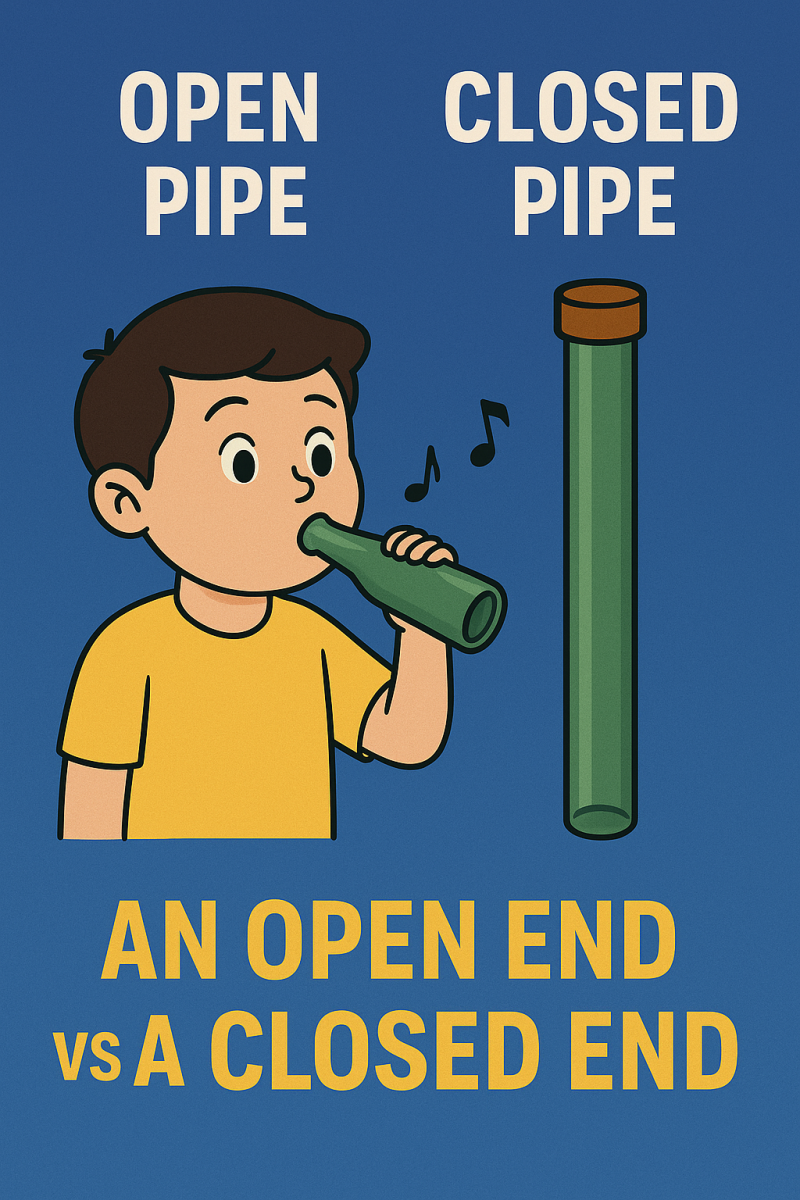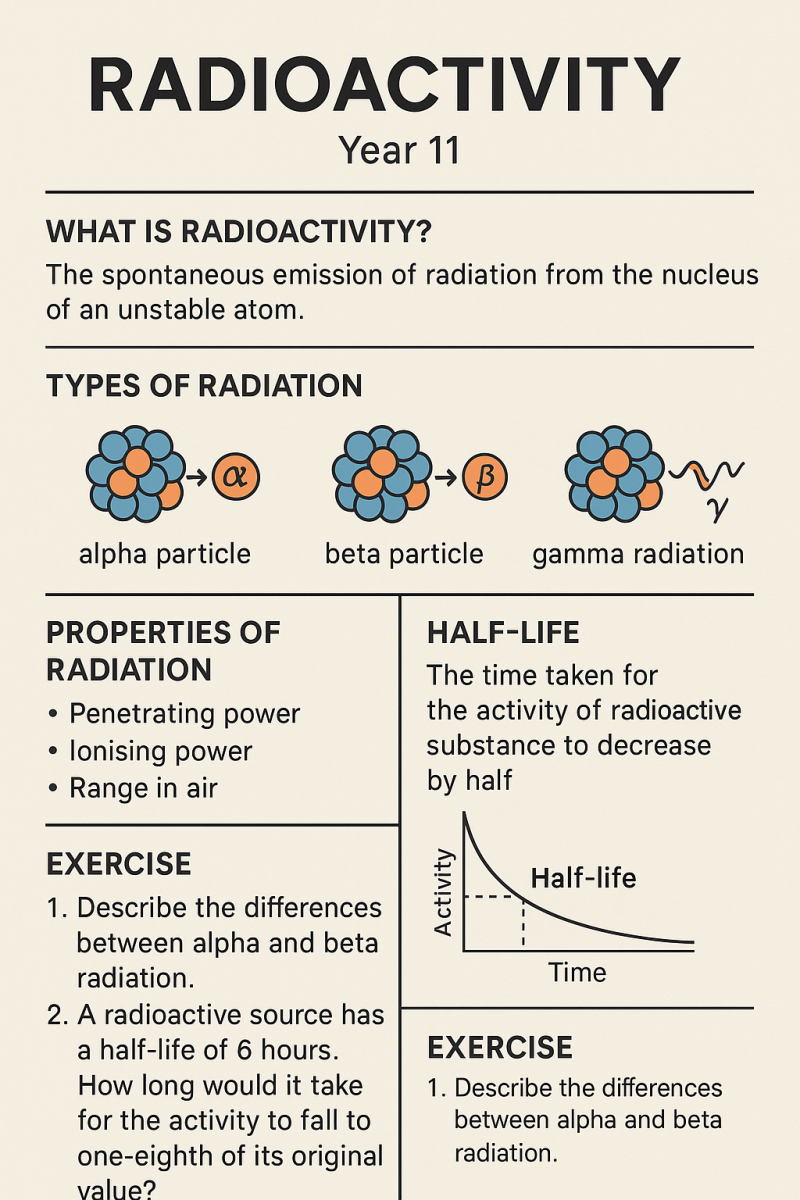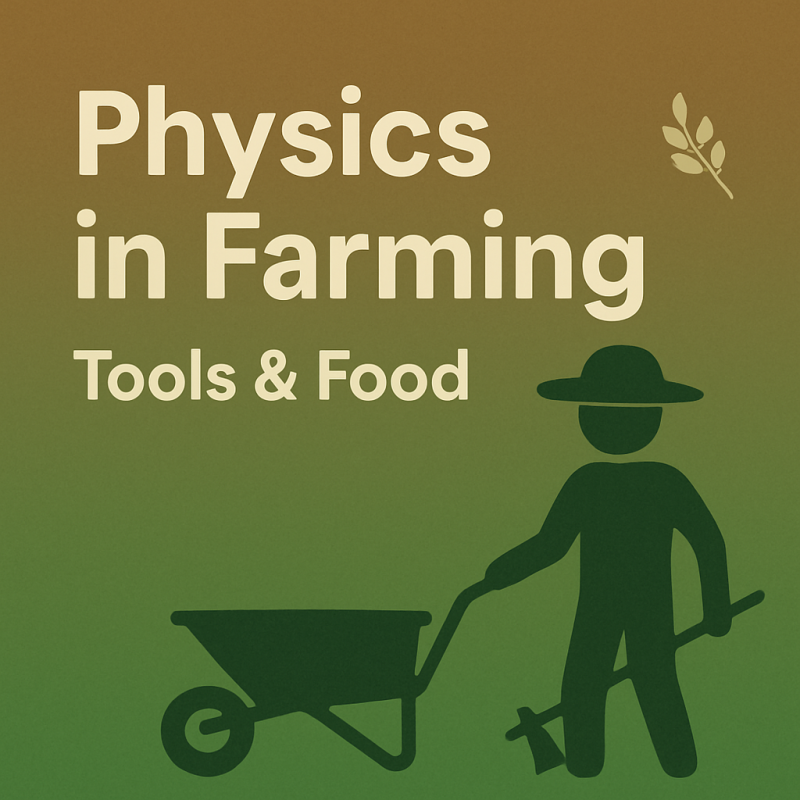

Welcome to Physics Digest

Our history
Why We Created Physics Digest
Why We Created Physics Digest
Physics Digest was born from a simple truth:
Many students struggle with physics not because it’s too hard, but because it’s taught in ways that feel disconnected from reality.
I’m Sefunmi Oluyede, a science educator, tutor, and passionate communicator. Over the years, I noticed:
-
Students feared formulas but didn’t understand why they worked
-
Curious learners lost interest due to rigid textbook teaching
-
Even brilliant students were afraid to ask “What if?”
So I created Physics Digest to help students:
-
Learn physics in bite-sized, engaging ways
-
See how science applies in real life
-
Ask questions that lead to discovery, not just grades
Every post, video, and lesson is designed with care - not just to teach, but to inspire future scientists.

Gravity
1. What is Gravity?
Gravity is the force that attracts two masses toward each other - it gives objects weight and governs the orbits of planets and moons.
2. Newton’s Law of Universal Gravitation
Every two masses m1 and m2 attract each other with a force:
F=Gm1m2/r2
-
F- is the force between the masses
-
G-is the universal gravitational constant
-
r- is the centre-to-centre distance between the masses
3. Dependence on Mass and Distance
-
Mass: Greater mass → stronger gravitational pull
-
Distance: Force decreases with the square of r (inverse-square law)
4. Weight vs Mass
-
Mass = amount of matter (kg)
-
Weight = force due to gravity (N), calculated as W=m⋅g
-
On Earth, g≈9.8 m/s2
5. Acceleration Due to Gravity (g)
All objects in free fall near Earth accelerate at ~9.8 m/s², regardless of mass .
6. Real-World Examples
-
Weight Change on Moon: Lower gravity → feel lighter
-
Planetary Orbits: Gravity keeps planets in orbit around the Sun
-
Tides: Moon's gravity pulls Earth's oceans
🔍 Exam-Prep Insights
-
Be ready to calculate gravitational force using Newton’s law
-
Explain how affects gravitational strength
-
Convert between mass and weight
-
Compare weight across different planets
Our story
From Idea to Impact
From Idea to Impact
Physics Digest started with one idea during my tutoring sessions:
“What if we explain big ideas in small, visual lessons?”
From that moment:
-
We launched our first lessons on Facebook in 2025
-
Students from Nigeria, the UK, and beyond tuned in
-
Animated videos brought physics topics to life
-
Parents and teachers started using and sharing the lessons
Today, Physics Digest is a growing digital library for students from junior secondary to A-Level.
We’re building lessons, experiments, and tools that make physics clear, useful, and fun.




Electric Field: The Invisible Push and Pull
Introduction
Every charged object creates an invisible region where forces can act on other charges. This region is called an electric field. From Coulomb’s studies to modern applications in technology, electric fields remain one of the most potent concepts in physics.
In this lesson, we’ll explore the history, definition, types, applications, calculations, and practice questions on electric fields.
History of Electric Field
-
Charles-Augustin de Coulomb studied electric charges in the 18th century.
-
Michael Faraday introduced the concept of “lines of force” in the 19th century.
-
These discoveries laid the foundation for our modern understanding of electromagnetism.
Definition and Concept
-
An electric field is the region around a charged object where it exerts a force on other charges.
-
Electric field lines:
-
Point away from positive charges
-
Point toward negative charges
-
Types of Electric Fields
-
Uniform Field → field lines are parallel & equally spaced.
-
Non-uniform Field → field lines are unevenly spaced, denser near charges.
Formula & Calculations
-
Electric Field Strength (E):
E=F/q. E=kQ/r2.
Where:
-
F = force,
-
q = test charge,
-
Q = source charge,
-
r = distance from charge.
Example Question:
A charge of +2μC exerts a force of 0.06 N on another charge. Find the electric field strength.
E=F/q=0.06/2×10−6=3.0×104 N/C
Real-Life Applications
-
Photocopiers and laser printers.
-
TV and oscilloscope screens (CRO).
-
Particle accelerators in research.
-
Electrostatic painting in industries.
Riddle & Quiz
Riddle: “I’m invisible, yet I push and pull everything around you. Who am I?”
(Answer: Electric Field)
Quiz:
Q: Electric field lines point…
a) Toward positive charges
b) Away from positive charges
c) In random directions
Correct Answer: b) Away from positive charges
Practice Questions
-
Define an electric field.
-
State two differences between uniform and non-uniform fields.
-
A charge of +5μC is placed 0.2m away from another charge of +2μC. Calculate the force acting between them.
Conclusion
The electric field explains how charges interact invisibly through space. From Faraday’s field lines to real-world applications in electronics, this concept is central to understanding physics.
Please save this lesson for revision and share it with a friend preparing for exams, if you don't mind.
Want more simplified lessons? Follow Physics Digest on Facebook, Instagram, Pinterest, and YouTube.
For weekly study packs, visit: www.sefunmioluyede.com/physics-digest



Physics & Music- Open and Closed Pipes 🎶
Introduction:
Music is not just art - it is physics in motion. Vibrations of air cause every sound we hear. Instruments like flutes, trumpets, and even soda bottles use the principles of open and closed pipes.
Key Concepts:
-
Open Pipe: Both ends open → antinodes at both ends. Fundamental frequency = λ/2.
-
Closed Pipe: One end closed → node at closed end, antinode at open end. Fundamental frequency = λ/4.
-
Musical Notes: The do–re–mi scale corresponds to frequencies that are multiples of the fundamental.
Practical Demonstration:
-
Blow across bottles filled with different water levels.
-
Use straws cut to different lengths (some closed at one end with tape).
-
Arrange straws to produce do–re–mi–fa–so–la–ti–do.
Calculations:
-
Pipe length = 0.5 m, speed of sound = 340 m/s.
-
Open pipe: f = v/2L = 340 / (2 × 0.5) = 340 Hz.
-
Closed pipe: f = v/4L = 340 / (4 × 0.5) = 170 Hz.
-
Essay Question:
“Explain why the fundamental frequency of a closed pipe is half that of an open pipe of the same length.”
Riddle:
“I am empty, yet I sing when you blow. Who am I?” (Answer: Pipe or bottle).
Takeaway:
Physics explains why music sounds the way it does. Without standing waves in pipes, there would be no flutes, trumpets, or bottle songs.

What Is Energy in Physics- and Why Can’t It Be Created or Destroyed?
🔍 Introduction:
Have you ever wondered why we say energy cannot be created or destroyed? From the food you eat to the light in your room, energy is all around us - but what exactly is it
?
This lesson helps students understand the true meaning of energy in Physics, how it is stored, transformed, and why it never disappears.
⚡ What Is Energy?
In Physics, energy is defined as the ability to do work. It exists in various forms, including kinetic energy (movement), potential energy (stored), heat energy, light energy, and chemical energy.
🌍 The Law of Conservation of Energy
One of the most important principles in science is this:
“Energy cannot be created or destroyed. It can only be transformed from one form to another.”
This means energy moves and changes - from food into muscle work, from the sun into solar power — but the total amount of energy stays the same.
🧠 Let’s Explore with Examples:
- When a ball falls, gravitational potential energy is converted into kinetic energy.
- A battery stores chemical energy, which powers a torch with light and heat.
💡 Try This:
Think of one activity you do every day. Can you describe how energy changes from one form to another?
📌 Follow us on Pinterest for more
solar dryer


🌞 Solar Dryer - Easy Science for Everyone
A **solar dryer** is a simple tool that uses sunlight to dry food.
It’s perfect for fruits like tomatoes 🍅, mangoes 🥭, or even fish 🐟.
Main Parts:
- Transparent top (lets in sunlight ☀️)
- Black surface (absorbs heat 🔥)
- Drying trays (hold food)
- Air vents (allow warm air to escape 💨)
- Box or cabinet (holds everything together)
Download the Lesson Resources


The Physics Behind The Game: How Science Shapes Modern Football
Football isn't just talent and tactics-it's a captivating symphony of science. From the mesmerising swerve of a free kick to the unpredictable bounce of a ball, physics weaves its enchanting spell every second on the pitch.
The Role of Forces in Passing and Shooting
Newton’s Laws of Motion come to life on the football field. When a player passes or shoots, they apply force-just like Newton described. That force changes the motion of the ball depending on its mass and speed.
Every kick generates force. But the air pushes back- this is air resistance. A gentle pass behaves very differently from a powerful strike, all because of this interaction with the air.
Then there’s friction. It’s the hidden opponent that slows the ball when it hits grass or turf. On dry ground, it travels farther. On wet grass, it might stop short. That’s science, not luck.
The Science of Curved Shots (Projectile Motion)
Angles, spin, and velocity shape some of the most unforgettable goals. A player curves the ball by kicking it at a precise angle, often with a spinning motion that causes it to bend mid-air.
One of the most iconic examples? Roberto Carlos’ legendary free-kick for Brazil- a shot that seemed to defy gravity. His “banana kick” was the perfect blend of power, angle, and spin. That’s projectile motion in action.
Player Movements and Balance
Staying balanced on the pitch isn’t random.It’s a testament to the precision of the players. It's all about the centre of gravity, which is the point in a body where its weight is evenly distributed and it can balance. Athletes must meticulously control their body mass, especially during tackles or high-speed turns, to prevent injuries.
From jumping to pivoting to diving headers, biomechanics is the driving force behind every move. It's why some players recover more quickly after a fall while others stumble.
Muscle force also plays a significant role. The way players train their bodies to generate quick bursts of motion is a testament to their dedication, reducing injury risk and improving overall performance.
Technology and Physics in Football
Modern football is an exhilarating blend of science and tech. Goal-line technology and VAR use cutting-edge motion sensors and precise timing to make crucial calls, adding a thrilling dimension to the game.
Even the ball design has evolved. Aerodynamics, surface materials, and even stitching all affect how the ball behaves under different weather conditions.
Then there’s the future: AI boots and smart wearables track every kick, sprint, and slide. Physics isn’t just behind the game—it’s becoming part of the equipment, too.
Next time you watch a match, look beyond the goals- see the physics at work.
Want more? Follow us at Physics Digest for bite-sized science breakdowns in everyday sports.


🔧 What Is "Work" in Physics - and Why Isn’t Carrying a Bag Always Work?
What is "Work" in Physics - and Why Isn’t Carrying a Bag Always Work?
Physics Digest | Lesson 1
When students hear “work,” they often think of carrying loads or doing chores. But in Physics, work means something more specific and measurable.
Definition:
Work is done when a force causes displacement in the direction of the force.
In simple terms:
No movement = no work.
No force = no work.
No displacement in the direction of the force = still no work!
Common Misconception:
Imagine this:
You carry a heavy bag of books while standing still.
You feel tired — but Physics says you’ve done no work, because the bag did not move.
Now walk forward with the bag:
That’s work, because you applied force and caused movement in that direction.
Formula:
Work (W) = Force (F) × Distance (d) × cosθ
-
F: Applied force
-
d: Displacement
-
θ: Angle between force and displacement
Real-Life Examples:
-
Pushing a trolley across a room - ✔️ Work is done
-
Holding a bag while standing - ❌ No work
-
Climbing stairs - ✔️ Work against gravity
-
Pulling a rope sideways while the object doesn’t move - ❌ No work
Quick Check:
-
Is there movement?
-
Is the movement in the direction of the force?
If YES to both, then physics says - work is done!
Next Lesson:
“Energy in Physics – Types, Transformations & Real-Life Examples”
Follow @PhysicsDigest for weekly science lessons.

Year 11 Physics Notes – Radioactivity
What is Radioactivity?
Radioactivity is the spontaneous emission of radiation from the nucleus of an unstable atom.
Types of Radiation
-
Alpha (α): 2 protons and 2 neutrons (like a helium nucleus).
-
Beta (β): A high-speed electron emitted from the nucleus.
-
Gamma (γ): A wave of energy, not a particle.

Physics & Farming-Tools & Food 🌾


Introduction:
Farming is one of humanity’s oldest activities. Behind every hoe, pulley, or water pump lies a principle of physics. Farmers are, in fact, natural physicists!
Key Concepts:
-
Levers in Farming:
-
Hoe, cutlass = lever.
-
Wheelbarrow = lever + inclined plane.
-
-
Water & Irrigation:
-
Pulley → makes fetching water easier.
-
Pressure & pumps → irrigation systems.
-
Capillarity → how water rises in soil and plant stems.
-
-
Energy in Farming:
-
Windmills/turbines → pumping water, grinding grains.
-
Tractors → mechanics + thermodynamics.
-
-
Storage & Preservation:
-
Evaporation cooling → clay pot cooler.
-
Silos → prevent spoilage.
-
Calculations:
-
To lift 20 L of water (20 kg):
-
Without pulley: F = mg = 20 × 10 = 200 N.
-
With 2 pulleys: Effort = 100 N.
-
Essay Question:
“Discuss three ways physics helps farmers store and preserve food.”
Riddle:
“I have no engine, but I carry heavy loads on the farm. Who am I?” (Answer: Wheelbarrow).
Takeaway:
Physics makes farming easier, more efficient, and more sustainable.
Free WAEC/NECO Physics Practical Guide – Download Now!
Why This Guide?
Every year, many students feel overwhelmed by WAEC or NECO Physics practicals. Not because they don’t know the theory — but because they’re not familiar with the tools, time limits, and scientific thinking needed during practical exams.
This guide simplifies everything.
What You’ll Learn:
🔹 Core Areas Covered:
-
Mechanics
-
Optics
-
Electricity
🔹 Popular Topics Explained:
-
SHM & Hooke’s Law
-
Ray Box & Refraction
-
Ohm’s Law, Meter Bridge & More
🔹 Scientific Skills Highlighted:
-
Observation & Data Handling
-
Inference & Evaluation
-
Time Management
🔹 Exam Strategy:
-
Suggested timing (1hr 15 min per question)
-
Tools you need on exam day
-
What “Alternative A” and “B” mean
Download the Free WAEC/NECO Practical Guide
Click the button below to download your full colour handout in PDF:
Download the Physics Practical Guide PDF
Use it to revise, practice, and walk into your exam fully confident!
Share with Others
If you know a friend, teacher, or school that could use this, please share this link with them.
Together, we’re making Physics simpler.
– The Physics Digest TeamNeed more help?
We also offer 1-on-1 tutoring and school content support.
Contact us: info@sefunmioluyede.com
Visit: www.sefunmioluyede.com
